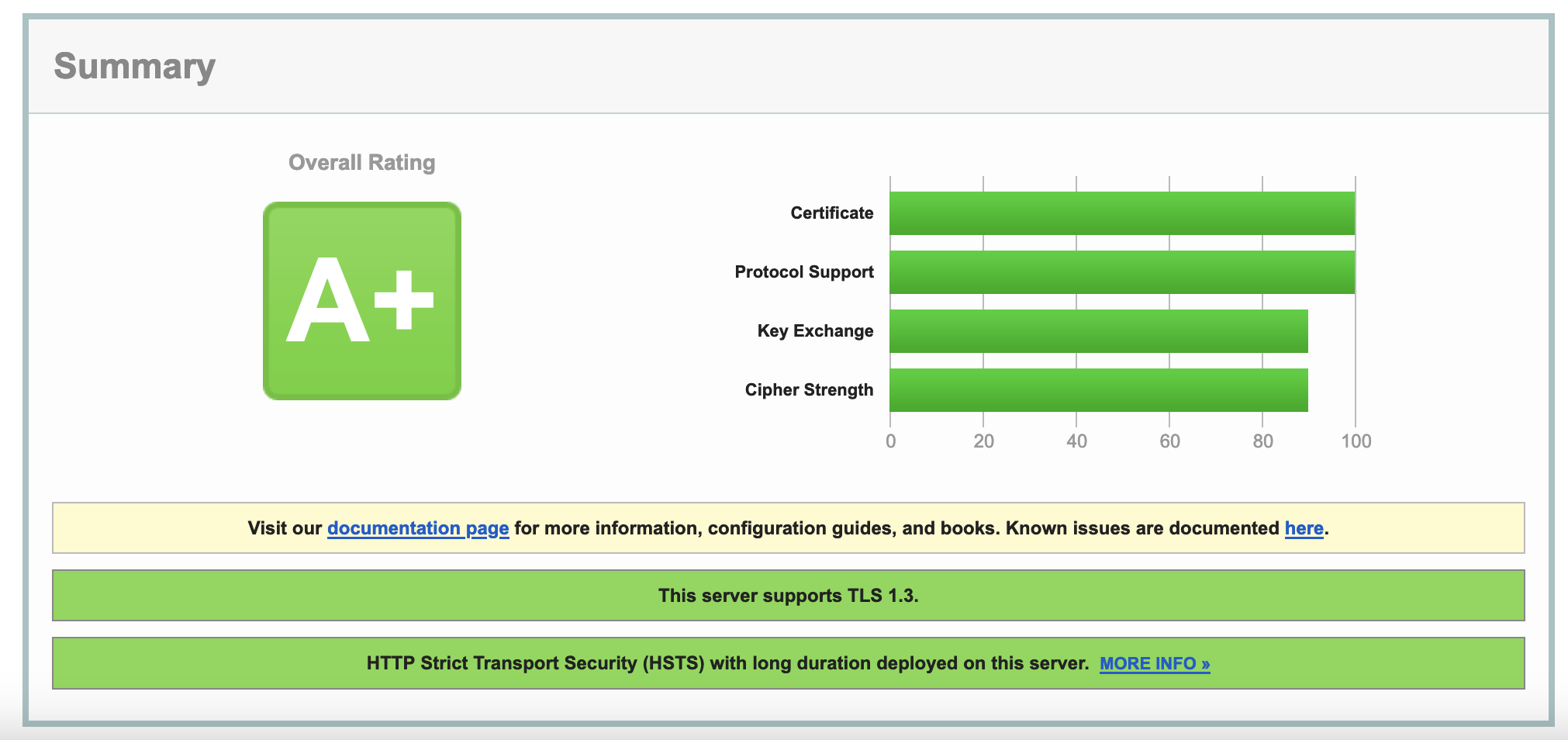We’re pleased to share our latest designations and recognition for being “best-in-class” when it comes to email security, including from SecurityScorecard, SSL Labs and the Cybersecurity Excellence Awards.
As you may know, our commitment to email security is unwavering, playing a central role in everything we do. Most of all, this commitment focuses on our customers – and ensuring PHI data is secure at all times. We do this via product innovation, best practices and staying ahead of the latest threats.
With that in mind, now’s a great time to highlight our company’s core values – which are anchored in security – to give you an idea of what it’s like to work with us. Together, they make up what we call the The LuxSci Way with a focus on the following:
- Secure – We protect the security and privacy of our customers’ data and their systems by taking a security-first approach.
- Responsible – We are focused on cybersecurity and ensure our software and systems are continually updated for the latest threats.
- Smart – We proactively apply our knowledge and deep expertise in cybersecurity to provide efficient, responsive customer support.
- Trust – We sustain partnerships with our customers, and we are committed to their long-term protection and success.
Read more to see the results!
98/100 on SecurityScorecard
LuxSci recently scored 98/100 and received an A rating on SecurityScorecard, a leading cybersecurity ratings firm. SecurityScorecard has ranked more than 21,000 unique vendors in the healthcare space with an average score of 88 and a B rating, placing LuxSci at the top end of the rankings in our industry.
SecurityScorecard ratings offer easy-to-read A-F ratings across a range of risk factors, including network, endpoint and application security, DNS health, and IP reputation. In total, SecurityScorecard has rated more than 11 million organizations worldwide and supports thousands of organizations with its rating technology for self-monitoring, third-party risk management, board reporting, and cyber insurance underwriting.
A+ on SSL Labs TLS Support Check
In related news, LuxSci achieved an overall A+ rating for its latest Qualys SSL Labs TLS support check. SSL Labs performs a deep analysis of the configuration of any SSL web server on the public Internet to better understand how SSL is deployed, scoring vendors across key areas, including certificate, protocol support, key exchange and cipher strength.
SSL Labs is a non-commercial research effort, welcoming participation from any individual and organization interested in SSL.
LuxSci Receives Cybersecurity Excellence Award for Healthcare
Finally, LuxSci recently received a 2024 Cybersecurity Excellence Award for healthcare products. The annual awards recognize excellence, leadership, and innovation in cybersecurity across a range of categories and industries. LuxSci was recognized for its Secure Marketing product for HIPPA-compliant marketing, which features industry-leading email security.
Part of the LuxSci Secure Healthcare Engagement Suite of software, LuxSci Secure Marketing empowers healthcare providers, payers and suppliers to use protected health information (PHI) to create secure and personalized email campaigns that increase patient engagement and improve outcomes. The highly flexible LuxSci Secure Marketing solution can securely send millions of emails per month, featuring list management, automation, easy-to-use templates, detailed reporting & analytics, and API connectivity to easily integrate with data and applications.
If you’d like to learn more about LuxSci email security, and our HIPAA-compliant healthcare communications solutions for email, marketing, forms and text, reach out to us today and schedule a call with an expert.










